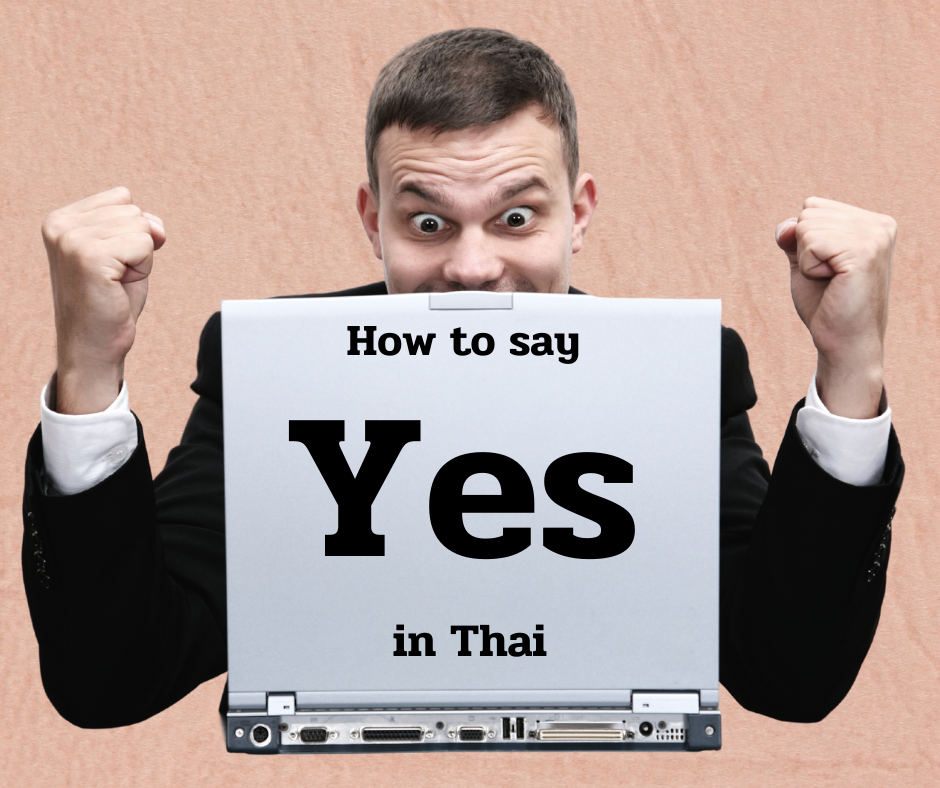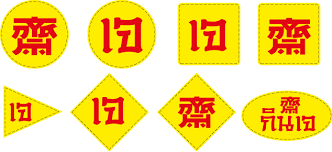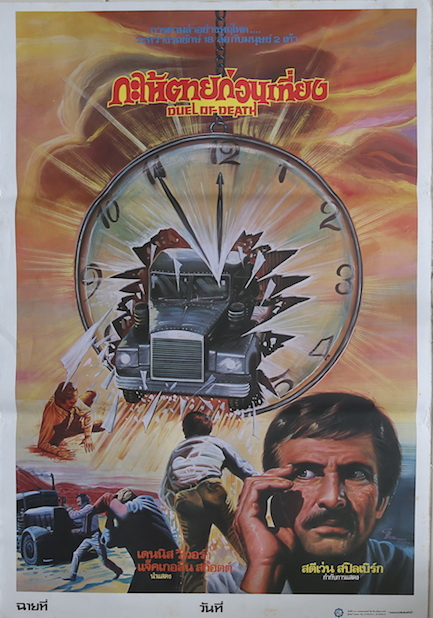Here are 5 of the more useful and well known Thai slang phrases that have been used lately. There are always new Thai slang phrases popping up on social media and it’s difficult to keep up with them all. As language learners, it can be harder for us to notice every time a new useful word or phrases appears on the internet so it’s a good idea to keep an eye out.
to be nosy = phueak (เผือก)
You’ll hear this word a lot from younger Thai people. While เผือก (phueak) actually means “taro,” Thais started using it in place of the word it derives from, “เสือก” (sueak) means the same thing, but sounds much harsher and can come across as rude.
สมชัย ชอบมาเผือกตลอด – Somchai is always nosing into other people’s business. (Somcha chawp maa phueak tha-lawt)
Cute(sy = frung-fring (ฟรุ้งฟริ้ง)
These Thai slang for “cute” can be a little confusing as which one is best to use depends on the situation.
It tends to be used by girls when talking about stuff that looks really cutesy like if there was a tiny cute stuff rabbit attached to a keychain. ฟรุ้งฟริ้ง (frung-fring) is also often used a lot when referring to a nice camera. So if someone feels or suggests a camera makes people look cuter or thinner you may hear กล้องฟรุ้งฟริ้ง (klawng frung-fring)
มุ้งมิ้ง (mung-ming) and ตะมุตะมิ (thamu-thami) are interchangeable in most situations and are more likely to be used to describe
- ดูคู่รักคู่นั้นซิ พวกเขาดูน่ารักมุ้งมิ้งมากเลย
- สองตายายคู่นี้น่ารักตะมุตะมิสุดๆ
Perfect; exactly = เป๊ะเว่อร์
If you know both เป๊ะ and เว่อร์, you can probably guess the meaning of this Thai slang.
เป๊ะ means “exactly” while เว่อร์ (wer) comes from (over) in English. However, เว่อร์ in Thai is used to mean something like “over the top.”
เป๊ะเว่อร์ means completely or exactly perfect. It’s similar to “nailed it” or when a successful outcome is exactly like or better than expected.
Attractive; good-looking = งานดี (ngaan dii)
If you’ve ever gone to any type of party or event with a Thai woman, you may have heard this word slip out.
แฟนของแจนงานดีมากอ่ะ – Jan’s partner is good-looking.
Dirty look; angry look = mawng raeng (มองแรง)
This slang word is a bit negative. If you make somebody angry and they turn and and glare at you, that’s a “mawng raeng.” Sometimes, people use it on social media to express that they are angry, but it can also be used jokingly or when teasing someone.
ปัจจุบันมีคำศัพท์ใหม่ๆ เกิดขึ้นบนโลก Social media มากมาย นี่ก็เป็นสาเหตุที่เราจะต้องเรียนรู้สิ่งใหม่ๆ ที่เปลี่ยนแปลงรอบตัวอยู่ตลอดเวลา ซึ่งการเปลี่ยนแปลงนี้ก็มาจากยุคสมัย ที่มีการนำสื่อออนไลน์อย่าง Social media เข้ามาเกี่ยวข้อง การพูดคุยสื่อสารกันจนเป็นเรื่องง่ายดายและหลายครั้งที่มีการใช้คำศัพท์ คำย่อ ในการพูดคุยเพื่อสร้างความบันเทิงให้กั
เพราะเราเห็นถึงความสำคัญในการเรียนรู้ ศัพท์สแลงไทย หรือ ศัพท์ที่วัยรุ่นไทยมักใช้ในการพูดคุยสื่อสารกันบนโลก Social media ในบทความนี้เราจึงพร้อมยกตัวอย่าง “ 5 ศัพท์สแลงไทย ปี 2562 ” มาให้คุณเข้าใจความหมายและสามารถใช้ตามกันได้
ตามมาดูความหมาย “ 5 ศัพท์สแลงไทย ” กัน
เผือก = การยุ่งเรื่องชาวบ้าน
นี่ก็เป็นคำศัพท์สแลงที่วัยรุ่นไทยนิยมใช้แทนคำหยาบ ที่มาจากคำว่า เสือก แปลได้ว่า การยุ่งเรื่องชาวบ้านเช่นกัน ชาวเน็ตวัยรุ่นจึงเลือกใช้คำที่มีการออกเสียงใกล้เคียงกันเพื่อให้อีกฝ่ายเข้าใจในความหมายที่เข้าหมายถึง เช่น นาย A เป็นคนที่ชอบอยากรู้เรื่องคนอื่นไปทั่ว นาย A ก็เป็นคนที่ชอบ “เผือก” นั่นเอง
ฟรุ้งฟริ้ง, มุ้งมิ้ง, ตะมุตะมิ = น่ารัก, ทำตัวน่ารัก
คำศัพท์เหล่านี้หลายคนก็ยังมีความสับสน ซึ่งการใช้คำสแลงนี้ก็จะมีความแตกต่างกันไปแต่ละสถานการณ์ คำว่า ฟรุ้งฟริ้ง ผู้หญิงมักจะใช้กับสิ่งของ ที่ดูหวานแหวว น่ารักแบบที่สาวหวานชอบ เช่น “พวงกุญขนกระต่ายดูฟรุ้งฟริ้ง น่ารักมากเลย” ส่วนคำว่า มุ้งมิ้ง และ ตะมุตะมิ จะมีความหมายใกล้เคียงกันมากที่สุด เช่น “ดูคู่รักคู่นั้นซิ พวกเขาดูน่ารักมุ้งมิ้งมากเลย” หรือ “สองตายายคู่นี้น่ารักตะมุตะมิสุดๆ”
*สมัยนี้นิยมใช้คำว่า ฟรุ้งฟริ้ง กับกล้องถ่ายรูป เช่นกล้องฟรุ้งฟริ้ง ความหมายประมาณว่า ถ้าใช้กล้องฟรุ้งฟริ้งถ่าย รูปที่ออกมาจะสวยเนียนขาว หรือว่าหน้าจะดูสดใสหรือตัวดูผอมกว่าจริง มักจะใข้กับ selfie camera
เป๊ะเว่อร์ = สมบูรณ์แบบมาก
เชื่อว่านี่เป็นคำศัพท์ที่คุณสามารถเดาความหมายได้จากคำว่า เป๊ะ ที่แปลได้ว่า “ถูกต้อง (Exactly)” ส่วนคำว่า เว่อร์ เป็นคำขยายที่แปลว่า “มากเกิน (Over)” ซึ่งนี่อาจหมายความเชิงลบ เช่น การทำอะไรมากเกินก็ได้ แต่เมื่อเรานำมารวมเข้ากับความหมายเชิงบวกอย่างคำว่า เป๊ะเวอร์ ก็จะหมายถึง “สมบูรณ์แบบที่สุด! หรือ เลิศเลอเพอร์เฟ็กต์ (Nailed i!)” ยกตัวอย่าง คุณนกแต่งตัวมางานอีเว้นท์คืนนี้ได้เป๊ะเว่อร์ หมายความว่า คุณนกแต่งตัวคืนนี้ได้สวยสุดๆ นั่นเอง
งานดี = หน้าตาดี
หากคุณเคยไปสังสรรค์หรือไปงานปาร์ตี้กับเพื่อนสาว บางครั้งคุณอาจจะได้ยินคำนี้หลุดมาจากปากเพื่อนสาวอยู่บ่อยครั้ง เมื่อผู้หญิงเจอคนที่หน้าตาดี ก็มักจะอุทานออกมากับเพื่อนสาวด้วยกันว่า งานดี ยกตัวอย่าง แจนเห็นผู้ชายที่เธอชอบ เธอเลยถามเพื่อนเธอว่า ผู้ชายคนนั้นงานดีหรือเปล่า? หรืออีกตัวอย่าง แฟนของแจนงานดีมากอ่ะ ก็หมายถึง แฟนของแจนหน้าตาดีหรือหล่อนั่นเอง
มองแรง = การมองแบบสายตาโกรธเกรี้ยว
คำสแลง มองแรง คำนี้เป็นคำที่ออกแนวเชิงลบ “เมื่อคุณทำให้ใครโกรธคุณขึ้นมา จนเข้าหันกลับมามองคุณด้วยสายตายโกธเกรี้ยวหรือไม่พอใจ” นั่นก็คือ การมองแรง เป็นอีกคำศัพท์วัยรุ่นที่ใช้แทนอารมณ์นี้การส่งข้อความผ่าน Social Media เพื่อให้เพื่อนของคุณสามารถเห็นภาพอารมณ์ของคุณได้ นอกจากนี้แล้ว การมองแรง ยังสามารถแปลเป็นการอิจฉาได้อีก เช่น แจ๋วซื้อกระเป๋ามาใหม่และโพสลงใน Facebook แล้วมีเพื่อนมาคอมเม้นต์ว่า มองแรง ซึ่งนี่ก็จะแปลได้ว่า “อิจฉา เป็นการหยอกเล่น” นั่นเอง
ทั้งหมดนี้ก็เป็นการใช้ 5 ศัพท์สแลงไทย ที่คุณควรเรียนรู้ เพื่อใช้ในการสนทนาพูดคุยได้อย่างสนุกสนานมากขึ้นกับคนท้องถิ่น ที่ซึ่งการเรียนรู้คำศัพท์เหล่านี้ก็จะทำให้คุณสามารถเข้าหาและตีสนิทผู้คนได้เป็นอย่างมาก





